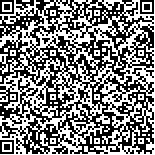下载中心
优秀审稿专家
优秀论文
相关链接
摘要

风害是影响中国天然橡胶产业发展最严重的自然灾害之一,它短时间内对橡胶林造成严重的物理伤害(大量落叶、枝条和主干折断等),严重影响后期生长和产量。传统地面调查虽然精度高,但耗时费力、经济成本高,利用遥感快速评估对指导灾后生产恢复、保险赔付和科学研究等具有重要意义。本研究以2019年8月1912号热带风暴“杨柳”在海南西部诱发的龙卷风为例,从影像数据覆盖的时效性、合成方法和灾害评估指标筛选等角度出发,探讨了联合Landsat 7/8和Sentinel-2时间序列遥感影像和影像差异法评估橡胶林风害损失的潜力。结果表明:(1)无云的Landsat 7/8和Sentinel-2影像在灾害发生前后的20 d内能对90%以上的研究区域实现至少一次覆盖,30 d内基本实现完全覆盖,像元尺度平均覆盖3次,60 d平均覆盖6次;(2)风灾前采用最大值合成,灾后采用中值法合成,获得的影像差异显著且监测指标最为稳定;(3)在时间窗口方面,灾害前后40 d窗口内合成影像的监测效果趋于稳定,与90 d窗口合成影像的结果差异不明显,保守的建议采用灾害前后60 d窗口内的影像进行风灾监测;(4)受损橡胶林风灾前后EVI数值变化最大,40 d窗口之后平均下降超过0.5,NBR次之,其后是LSWI、NDVI、近红外(NIR)和短波红外(SWIR1和SWIR2)波段。从变化的百分比值看,风灾后LSWI和SWIR2的变化幅度最高,降幅超过120%,明显高于NBR、EVI、NIR和SWIR1。相比之下,LSWI的空间变异(60 d合成时标准差约27%)明显低于SWIR2(60 d合成标准差约83%);(5)此次龙卷风造成海南西部约645公顷的橡胶林报废,作为30年经济寿命周期的作物,损失非常严重。本研究展示了联合Landsat和Sentinel-2监测橡胶林风害损失的巨大潜力,为今后橡胶林和其他作物的台风灾害及时监测提供了重要的方法参考。
Wind damage is one of the most serious natural disasters affecting the development of China’s natural rubber industry. It caused huge physical damage (e.g., a large number of fallen leaves, branches and trunk breakage) to rubber plantation in a short period of time, which seriously affected the subsequent growth and latex production. Although traditional ground surveys have high accuracy, they are time-consuming, labor-intensive, and economical. The rapid assessment using remote sensing is of great significance for guiding post-disaster production recovery, insurance compensation, and scientific research.Taking the tornado induced by tropical storm Yangliu in 2019 in western Hainan Island as a case study, this study explores the potential of combining Landsat and Sentinel-2 time series images to assess tornado damage of rubber plantations from the perspectives of data availability, image composite methods, and disaster assessment indicators. The image difference method was used to detect differences before and after the tornado.The results showed that: (1) cloudless Landsat 7/8 and Sentinel-2 images can cover more than 90% of the study area at least once within 20 days before and after the disaster, and almost cover the whole area within 30 days. The average coverage at the pixel scale is three times in 30 days and six times in 60 days. (2) The image difference generated by the maximum value composite of images acquired before tornado and the medium value composite of image acquired after tornado is the most significant and stable. (3) In term of time window, the monitoring effect from images acquired within 40 days before and after tornado tends to be stable, and there is no significant difference when compared with the results generated from a 90-days time window. It is conservatively recommended to use images in a 60-day window before and after the tornado for disaster assessment. (4) The EVI of the damaged rubber plantation before and after the tornado changed the most, followed by NBR, LSWI, NDVI, near infrared (NIR), and shortwave infrared (SWIR1 and SWIR2) bands. In terms of percentage changes, LSWI and SWIR2 showed the highest changes after the tornado, followed by NBR, EVI, NIR, and SWIR1. However, the spatial variation of LSWI was significantly lower than that of SWIR2. (5) The tornado completely destroyed about 645 ha of rubber plantation in western Hainan Island. As a crop with a 30-years economic life cycle, the loss is very serious.This study demonstrates the great potential of combining Landsat and Sentinel-2 images to access tornado damage of rubber plantation, and provides important insights for timely evaluating typhoon disaster of rubber plantations and other crops in future.

